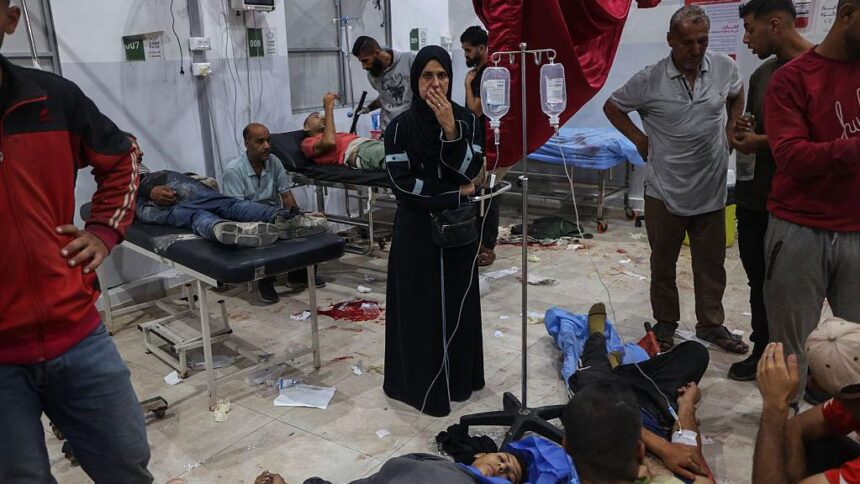Introduction
The Gaza aid crisis has intensified as at least 46 Palestinians were killed by Israeli fire while waiting for food in central and southern Gaza, according to hospitals and rescue teams. UN agencies have condemned the militarized aid delivery system, with one official describing it as a “death trap” and a violation of international humanitarian principles.
Gunfire at Gaza Aid Centers Leaves Dozens Dead
Footage from al-Awda hospital in Nuseirat showed young men groaning in pain and drenched in blood as medics rushed to care for the wounded. “My son went to get a grain of flour so he could feed his siblings, and now he is in the ICU,” said Umm Raed al-Nuaizi, whose son was shot while waiting for food. The hospital was overwhelmed, with patients lying on the floor as every bed filled quickly.
According to BBC reports, the Israeli Defense Forces (IDF) acknowledged receiving reports of fire near the Netzarim corridor but stated they were reviewing the details. Meanwhile, Gaza’s Hamas-run Civil Defence agency confirmed 21 people were killed in Nuseirat, and 25 more near Rafah later the same morning.
UN Officials: ‘Weaponization of Aid’ Is a War Crime
During a press conference in Geneva, UN human rights spokesman Thameen al-Kheetan condemned the Israeli-controlled aid process, declaring: “Israel’s militarised humanitarian assistance mechanism is in contradiction with international standards.” He emphasized that restricting food access and targeting civilians could constitute a war crime under international law.
UNRWA head Philippe Lazzarini was even more direct, calling the Israeli-US backed Gaza Humanitarian Foundation (GHF) “an abomination that humiliates and degrades desperate people.”
The Role of the Gaza Humanitarian Foundation
The GHF, a US- and Israel-backed private organization, began distributing aid in Gaza after Israel slightly eased its blockade over a month ago. Officially operating independently, the group uses private security and has refused cooperation with the UN and other major international agencies.
While GHF claims to have distributed 41 million meals, UN groups argue the group is undermining humanitarian neutrality and placing civilians in danger zones. The UN has refused to collaborate with the GHF, citing breaches of humanitarian conduct.
Witnesses Describe “Unprovoked” Attacks
Eyewitnesses near Rafah described Israeli tanks advancing without warning and opening fire on civilians. “The shooting was directly on the crowd… everyone around us was wounded,” said Hatem Abu Rjileh, who managed to rescue a relative. The IDF denied knowledge of this specific incident, telling the BBC it was “not aware of an event at the Rafah aid distribution site.”
Growing Death Toll and International Alarm
Since GHF began operations in late May, more than 410 Palestinians have reportedly died from Israeli fire or shelling while trying to access food, according to UN figures. Images from northern Gaza also show Palestinians climbing on top of UN aid lorries, reflecting desperation amid chronic shortages.
World Central Kitchen, another aid organization, reported that food trucks reached Gaza for the first time in 12 weeks. Still, the quantity remains insufficient. Famine looms, experts warn, especially as many refuse to approach GHF sites labeled as “death zones.”
Conclusion
The Gaza aid crisis is not just a humanitarian emergency—it is a growing international scandal. As UN agencies demand accountability, and families bury their dead, questions remain about the safety, ethics, and legality of Israel’s current aid delivery model. The world must act to ensure food is not used as a weapon of war.
For more on related conflicts, explore our internal coverage on the Iran-Israel Ceasefire and Its Global Fallout.


